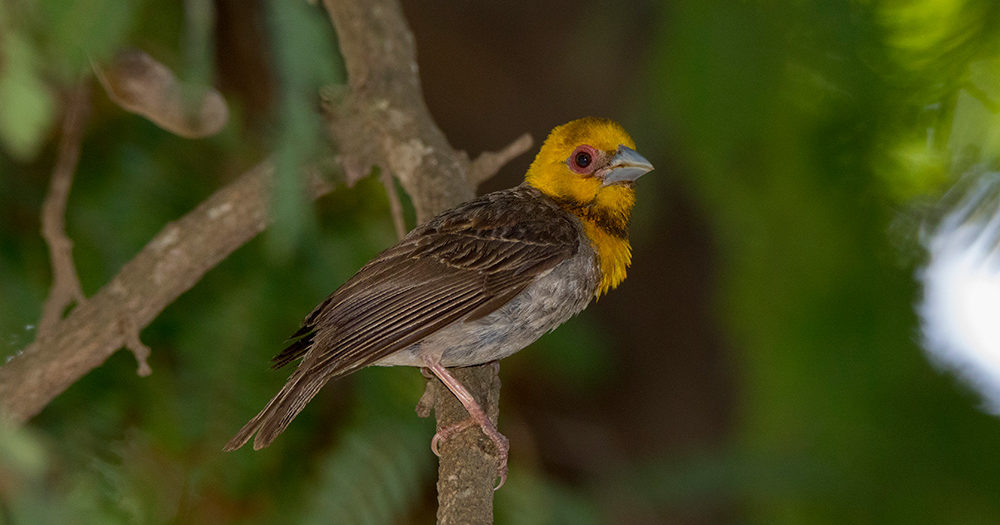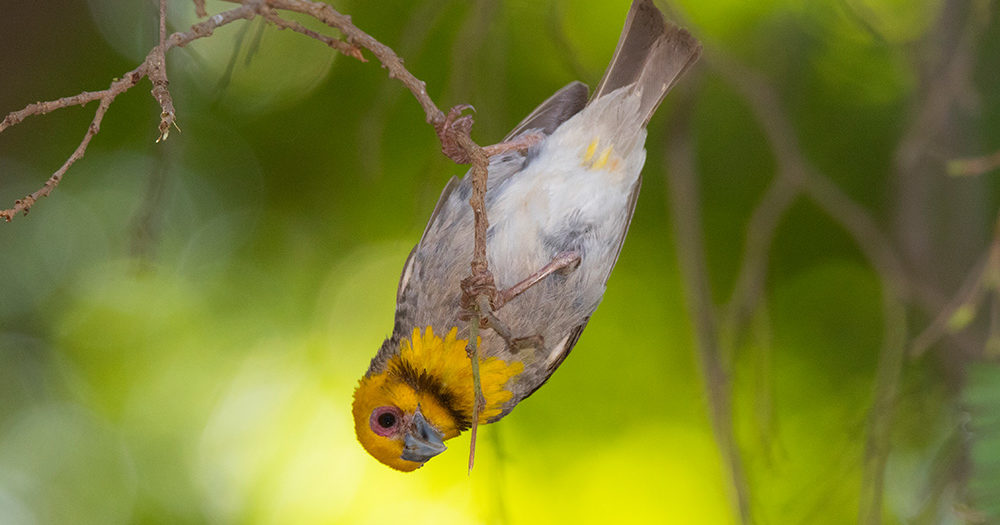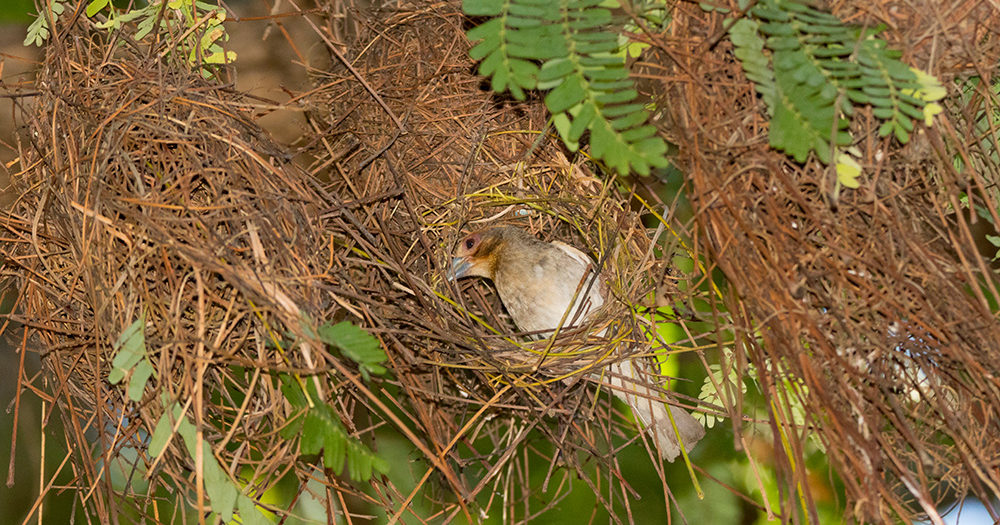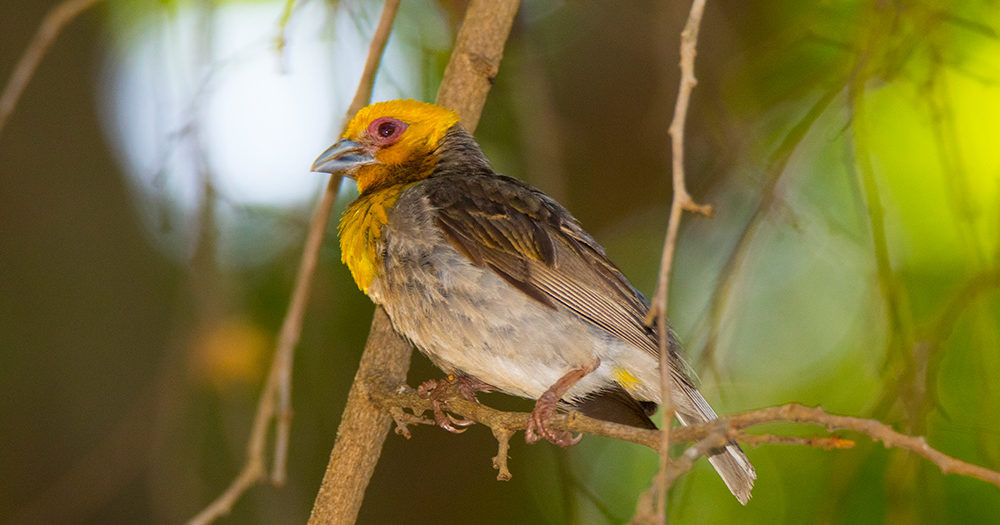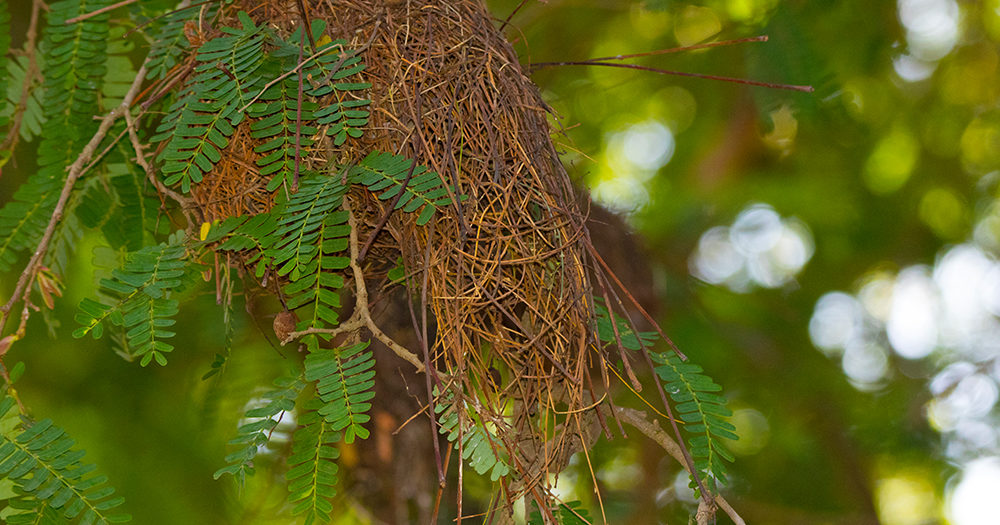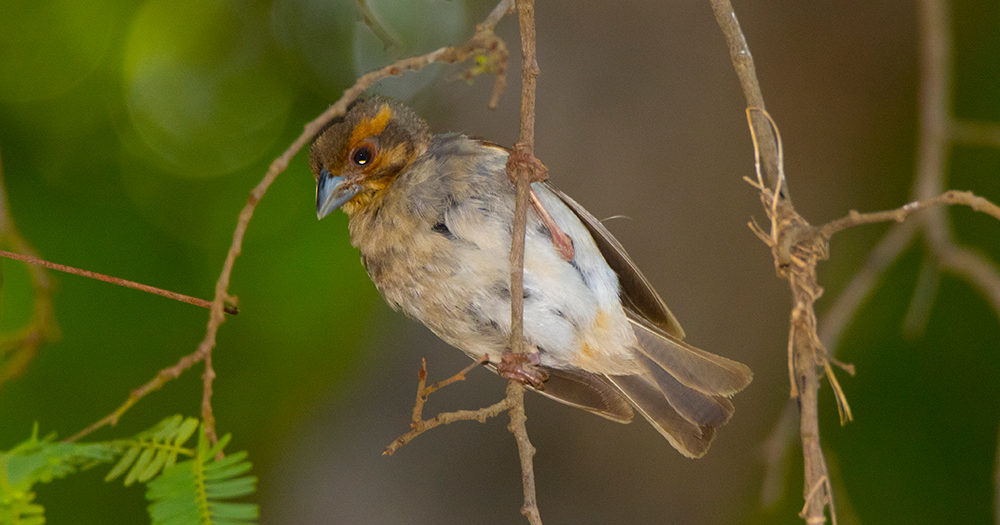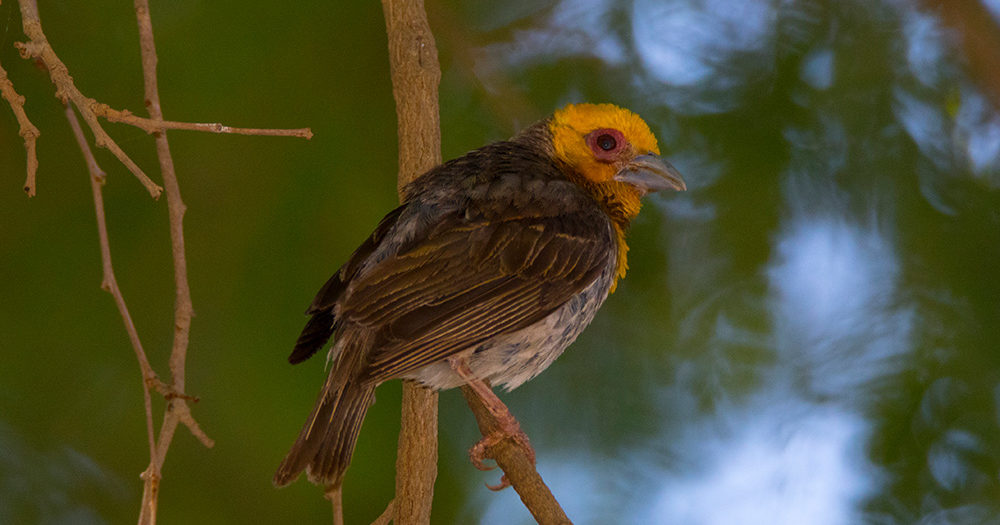The small, only 25 g weighing Sakalava weaver (Ploceus sakalava) only occur in Madagascar. As the name indicates, they belong to the weaver birds and are widely distributed around the island: Everywhere where the eponymous tribe of the Sakalava lives. This is mainly western Madagascar; from the deep, hot and dry South to the North.
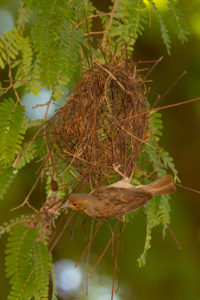
Sakalava weaver prefer dry areas. But as synantrophic birds, they are very flexible and can even live in gardens. In this context it is perfect that Sakalava weaver are seedeater, because rice is part of every Madagascan household. And the women of each house need to dry and prepare their rice outside in the sun. This is the perfect chance for weaver birds to scrounge a lunch. But they also like any other kind of seeds, and add some small bugs, flies and spiders to their meals.
Nowadays, two subspecies are known: Ploceus sakalava sakalava in northwestern Madagascar and Ploceus sakalava minor in the southwest of the island. Both live preferably in colonies with nests spread all over few trees standing close to each other. In Madagascar, those trees are often old, broad-crowned tamarinds. One single tree can contain up to 120 nests! However, in most cases it is much less – although even 40 couples per tree can reach an impressing sound.
A small time frame of two to four months during rainy season have to be enough to produce offspring. Maybe this is why Sakalava weaver are so enormously quick an nimble – they seem to be in hurry all the time. Accordingly, both parents take part in building a nest. Noone is allowed to sit idle! Indeed if a male builds an especially beautiful nest, the females will like him much more than others. Colour also plays a role: The yellower the feathers, the more interesting is a male. Outside mating season, the males become less conspicuous and look similar to the greyish-brown females.
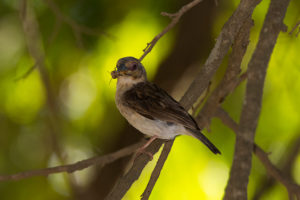
Laboriously, both parents weave a nest made of hundred small branches and grasses. It takes days to finish the artwork. The final nest consists of a tube-shaped entrance of lengths up to 40 cm and a bulbous end, in which the female lays two or four eggs. The entry always points downwards, so predators such as snakes, lemurs or birds of prey have no easy access to the nest. Sakalava weaver continue their behavior even when caring for young: Male and female share all tasks of the day. Well, you are stronger together than alone. And that is also the way Sakalava tribe families see it: The sociable weaver bird is a lucky charm in Madagascar.
 MADAMAGAZINE Your Magazine about Madagascar
MADAMAGAZINE Your Magazine about Madagascar
